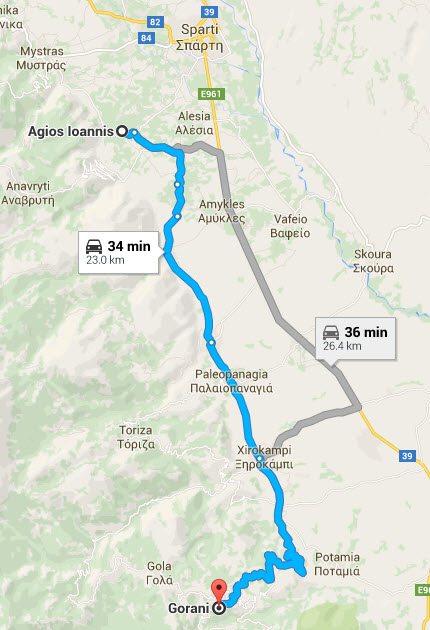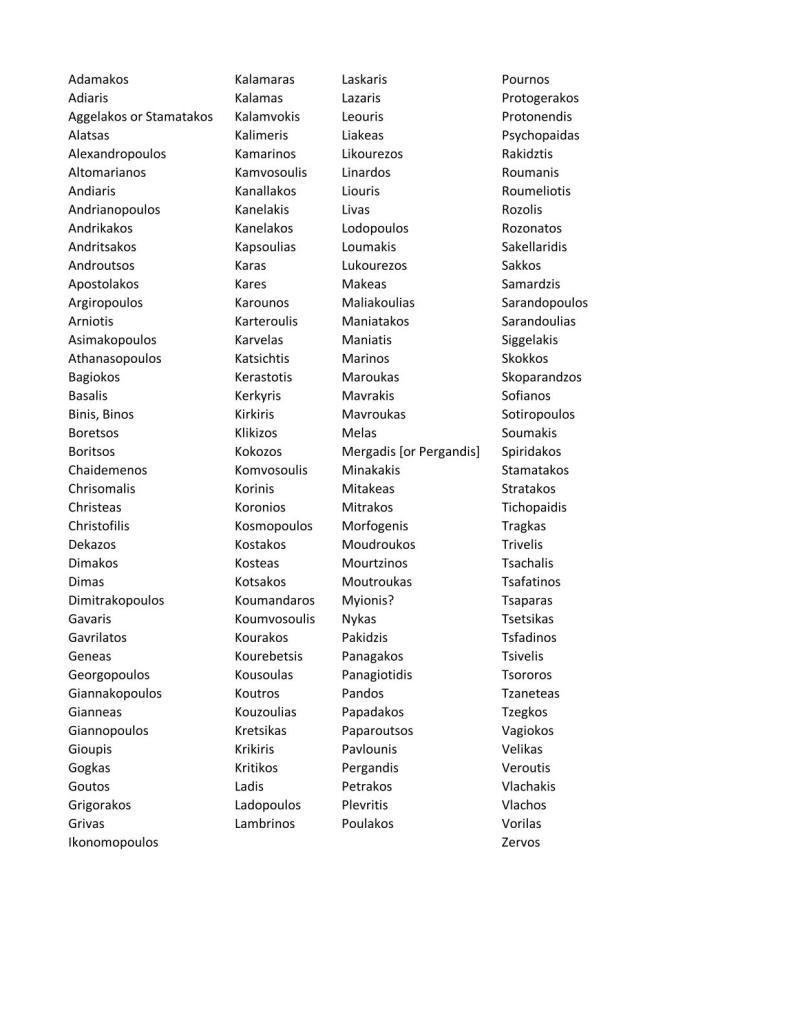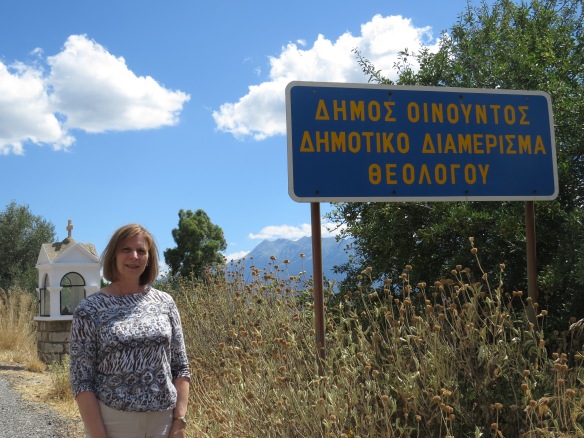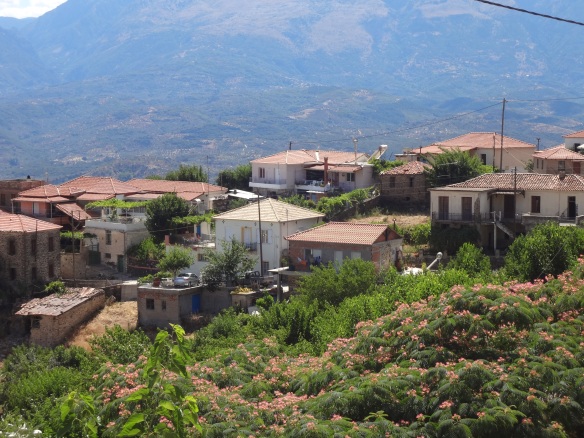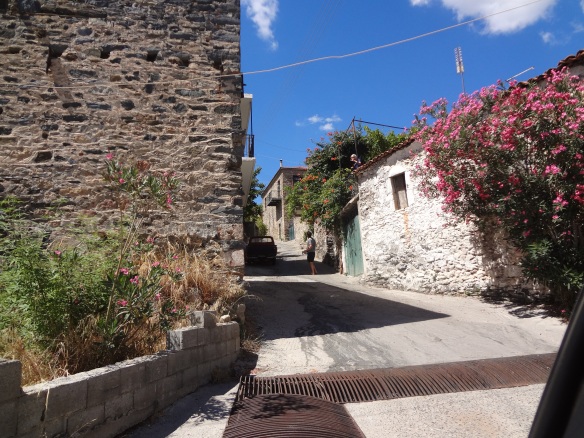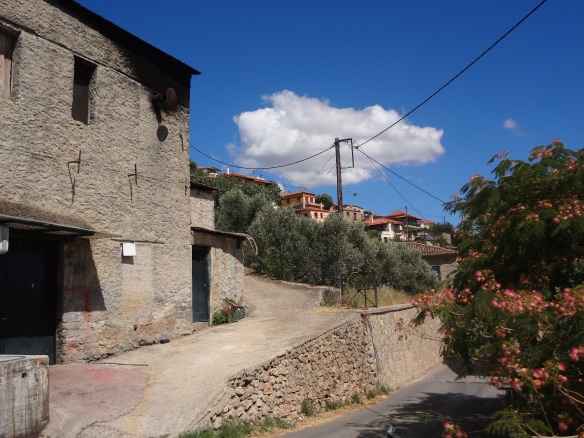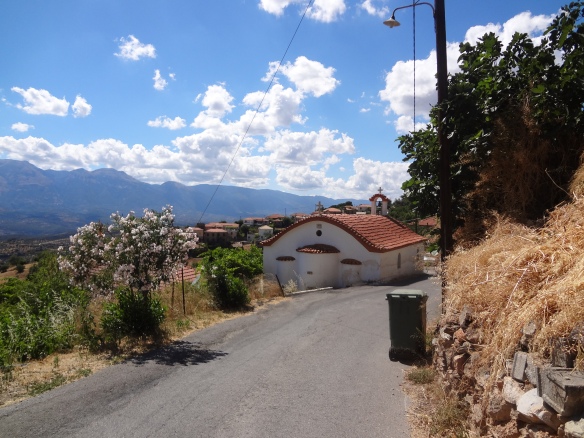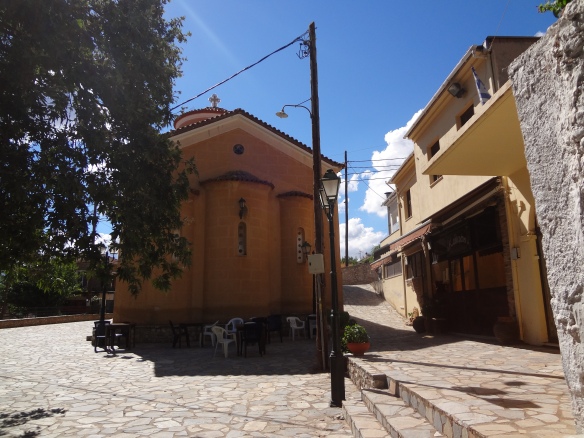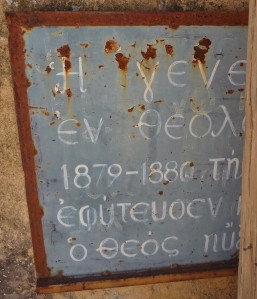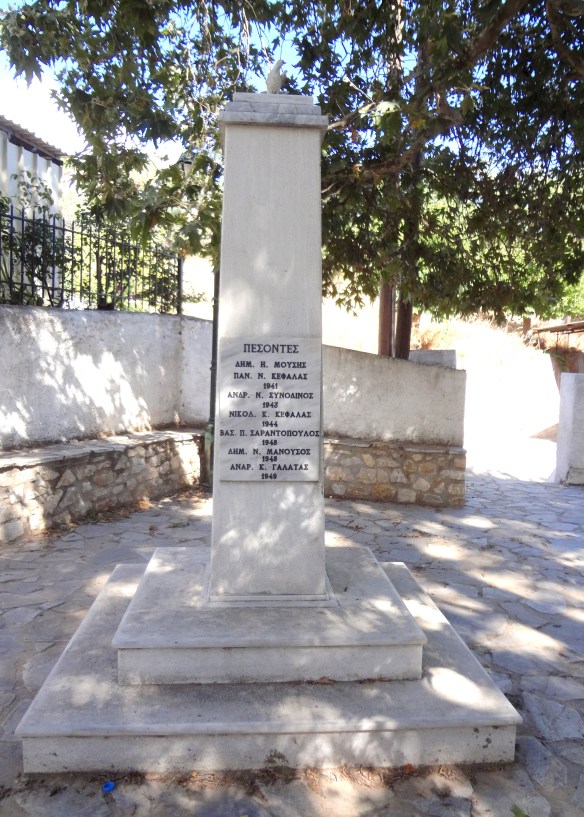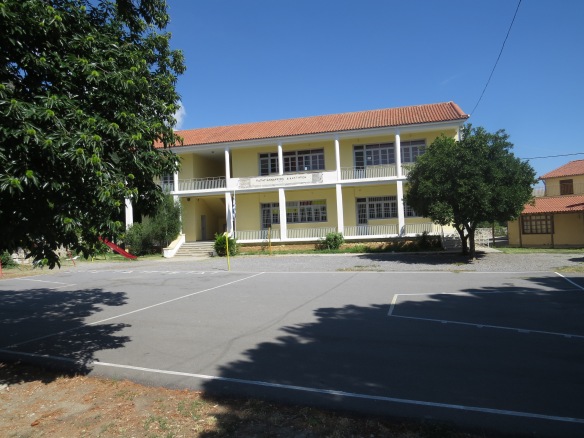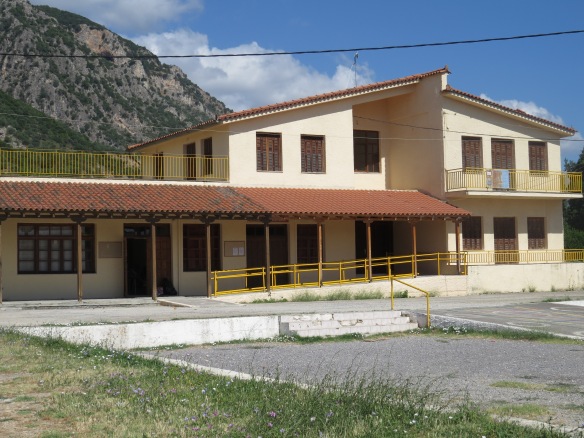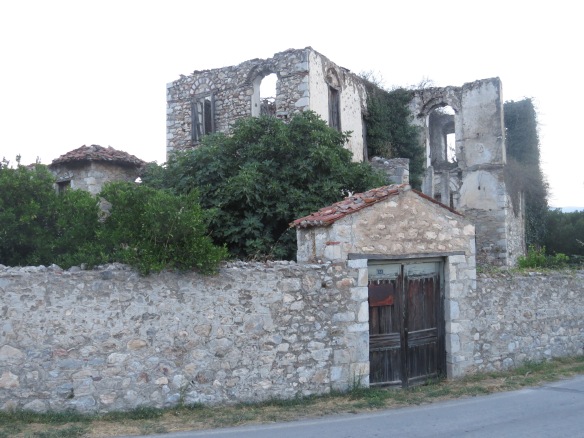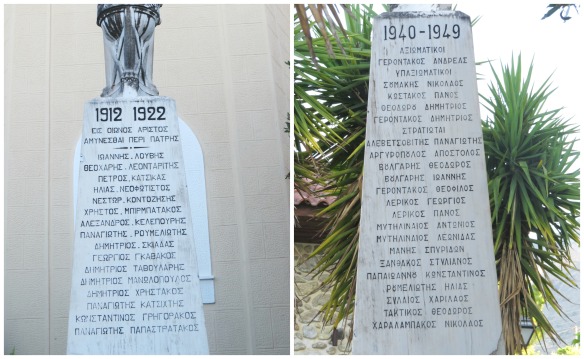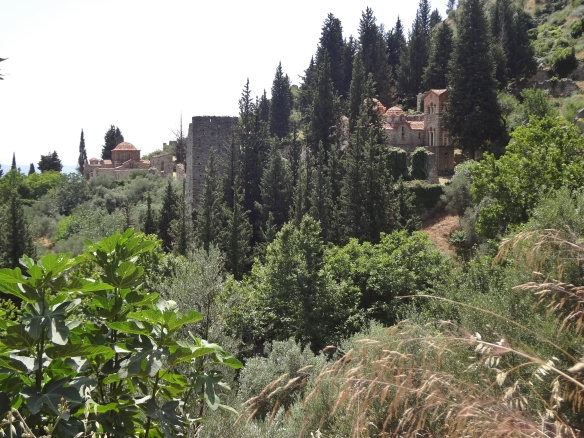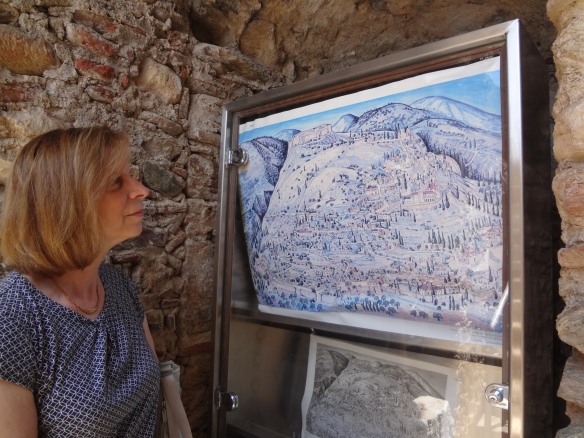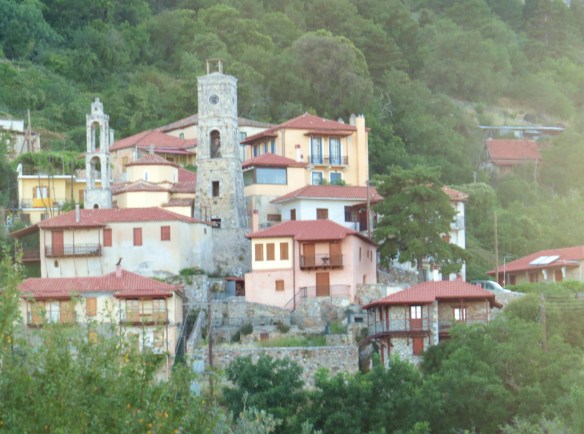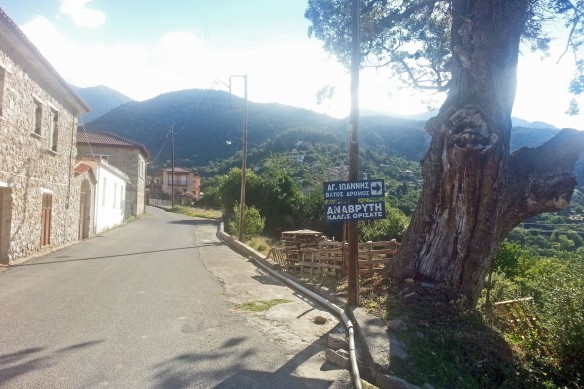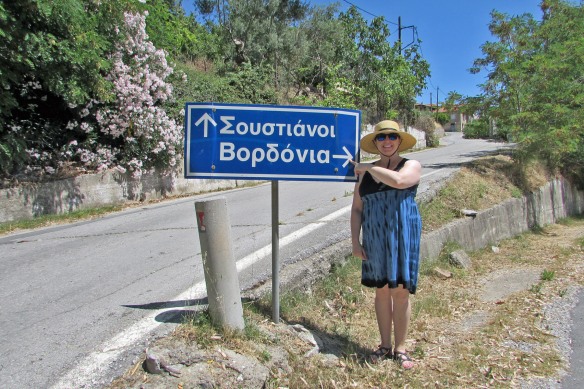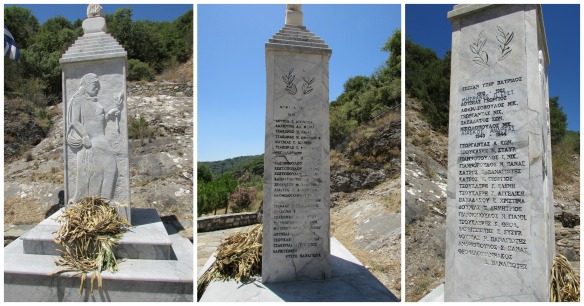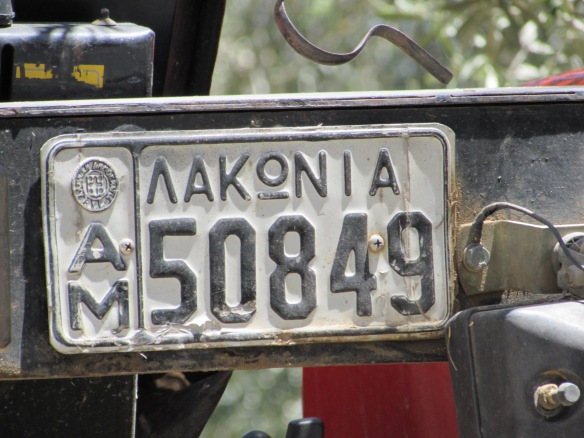On November 7, I went to Orlando, Florida to teach 4 classes at the Central Florida Genealogy Conference. Although my classes were well attended, the one on “Researching Your Greek Ancestry” attracted two people. Nevertheless, I was happy to be able to give them individualized help in the areas they need to research.
While in Florida, I took full advantage of connecting with new cousins. On Friday evening, I met Maria Lambrakos Skordilis and her son, Peter, for dinner in Ybor City (downtown Tampa). Peter, Sophia and I are DNA cousins, and according to GEDmatch Peter and I are about 4.6 generations from our “most recent common ancestor” (MCRA); Sophia and I are 4.8.
We share Brooklyn, New York roots: Peter and I were both baptized at St. Constantine & Helen Church, which is also where Sophia was married. We recognized many Greek Brooklynite names, but as hard as we tried, we couldn’t determine our common ancestor. Sophia’s pedigree includes the surnames Lambrakos, Papastratis, Stratakos, Lambrianakos and Doukas. These families are from Gorani, about 6 miles south or a 1/2 hour drive from Sparta and Agios Ioannis. I’m thinking that Sophia and I are related through my maternal line, as she looks as if she could be a twin to one of my cousins. Even our waitress commented that there is a strong resemblance between us!
On Saturday evening after the conference, I visited with George Topalidis whom I had met at our Hellenic Genealogy Conference in Salt Lake City on September 26. We were discussing plans for a similar conference in Tarpon Springs, Florida next fall.
Was I ever surprised to learn that George’s wife, Eva, and I also share Brooklyn connections! Her family is from Anavriti, the village next to Agios Ioannis (honestly, I think everyone in Brooklyn has ties to Anavriti!) Her father’s family is Capous; her mother’s line is Chrisomalis. We started comparing notes and I learned that her Chrisomalis family married into my grandmother Aridas’ family, and that she is thus a cousin to one of my 2nd cousins. Huh? What are the chances???
On Sunday morning, I had brunch with my 2nd cousin, Jim Stavracos and his lovely wife, Maria. This was the first time we met. Jim’s grandmother, Antonia Kostakos Stavracos, is the sister of my paternal grandfather, John Andrew Kostakos. Of course, Jim and I are Brooklyn-born although both of us left the city as young children. He grew up in Baltimore and I grew up in New Jersey, then Maryland.
I had found Antonia’s death certificate and her husband, Peter’s naturalization records which I brought to Jim. He filled me in on many family stories and shared photographs. He said he has a photo of Antonia holding a shotgun, standing in front of the family home in Greece. I sure hope he can find that one!
I am so excited to meet these new family members and look forward to collecting more cousins!
On another note…last Monday evening, I gave a presentation at the Carroll County, Maryland Genealogy Society and met a woman named Antigoni Lefteris (Eleftheriou) Ladd. Her family is from Trikala, a city in north central Greece. They emigrated and settled in the town of Westminister in western Maryland.

Antigoni Leftheris Ladd, Carol Petranek; Westminster, Maryland; November 2015. Antigoni is the editor of The Greek Families of Westminster, Maryland.
In April 2013, Antigoni became involved in an initiative begun by Westminster’s physician, Dr. Dean Griffin, to collect and preserve the stories of local Greek families. From these first-person narratives, photos and news articles, a community history evolved and is now preserved in the fascinating book, Honoring Our Heritage, The Greek Families of Westminster, Maryland. The following families comprise the heart of the book: Amprazes, Sirinakis, Haralampoulos, Koretos, Bourexis, Lefteris, Letras, Nickolas (Nikolaou), Pappas (Batayiannis), Samios, Sharkey (Chakou).
Antigoni became the editor of this project, and it was her persistence and dedicated effort that culminated its publication in August 2015. I love this book! It is so inspiring and heartwarming to see the stories of these Greek families memorialized and preserved for the generations to come.
More of us need to follow Antigoni’s example. With each generation, we slip further away from our immigrant ancestors. Their stories will be lost to future generations if we don’t write what we know and collect what we can find. That is a tragedy which we can prevent — but only if we choose to act.



